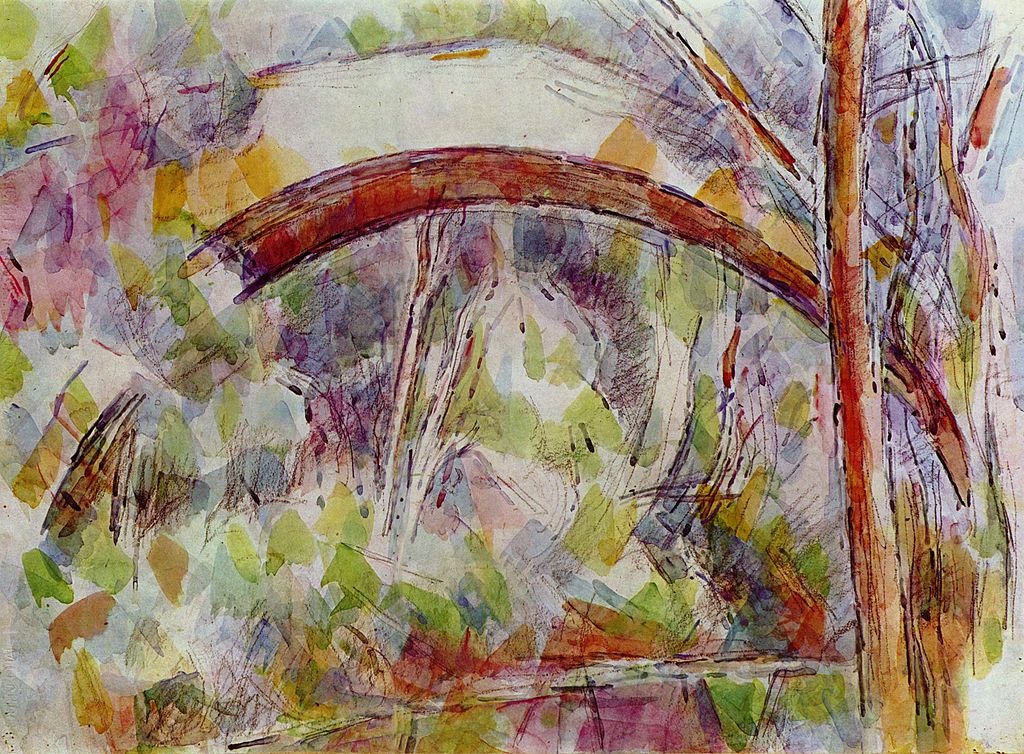
Discovery Behind Cézanne’s Paintings
You can imagine how delighted the Barnes Foundation conservation department was when during a recent paper conservation treatment, they discovered two unfinished sketches by Paul Cézanne on the reverse side of two of his watercolor paintings. It was not uncommon for Paul Cézanne to work on both sides of the paper in his sketchbooks and on larger, individual sheets. This discovery marks the first time these particular sketches have been seen since the early 20th century, if not earlier. Learn more.
New Emerging Artist Grant Program
The Joan Mitchell Foundation has announced the Emerging Artist Grant Program, a new initiative designed to assist emerging visual artists across the U.S. This pilot program will award a diverse group of ten artists with an unrestricted grant of $12,000 per artist in addition to professional support throughout the year. The Foundation seeks to award visual artists who demonstrate excellence in their work, a commitment to their careers and artistic communities, and a willingness to engage in the varied support provided by this program. Established in 1993, the Joan Mitchell Foundation is an artist-endowed non-profit organization. The Foundation celebrates the legacy of Joan Mitchell. Learn more.
Artists Protest Leads to Getting NYC Gallery Exhibition
Have you been following the Edward Snowden sculpture adventure? Three artists and some assistants illegally installed a faux-bronze bust of NSA whistleblower Edward Snowden in Brooklyn’s Fort Greene Park two weeks ago. The day later the the New York City Parks Department removed the sculpture. But the installation caused such a heated conversation in social media. And, publicity hounds were there for the catch. Suffice to say the artists’ protest and attraction to themselves rewarded them with an invitation to show the sculpture in a New York art gallery.
Jerrold Nadler Defends Artists’ Rights
New York Representative Jerrold Nadler is still working diligently to try to pass the American Royalties Too (ART) Act. ART would require that living artists get a 5% percentage in royalty fees when their works sell at auction for markedly more than the original price. The royalty would apply to auctioneers that have sold at least $1 million worth of visual art during the previous year. Nadler has been wrestling with the major auction houses Christie’s and Sotheby’s who adamantly oppose the bill. Bravo to Nadler who has been an advocate for the artist and a champion of the arts for decades.
Robert Rauschenberg’s Legacy is Advanced
As part of a strategic plan to advance the legacy of Robert Rauschenberg’s life and work, the Robert Rauschenberg Foundation has announced new gallery representation for the artist who died in 2008. The Foundation recently ended its long relationship with Gagosian Gallery in New York, NY, and has selected three international galleries to represent the artist’s work: Pace Gallery (New York, London, Hong Kong, and Beijing); Galerie Thaddaeus Ropac (Salzburg and Paris); and Galeria Luisa Strina (São Paulo). Since 2012 the Foundation placed seminal pieces in the collections of major museums across the United States, including the Guggenheim, the Metropolitan Museum of Art, the Museum of Modern Art (MoMA), and the San Francisco Museum of Modern Art (SFMOMA).
Met Expands its Engagement With Modern Art
As the Whitney Museum nestles into its new home in Manhattan’s Meatpacking District on May 1, 2015 the new inhabitant of its former Madison Avenue building, designed by Marcel Breuer, is The Metropolitan Museum of Art. Almost a year from now, on March 10, 2016, The Met Breuer will launch its first season of programming. It will encompass “major monographic and thematic exhibitions, new commissions, performances, and an artist-in-residence series.” Visitors will be able to engage with “the art of the 20th and 21st centuries through the global breadth and historical reach of the Met’s unparalleled collection and scholarly resources.”

Thanks very much Renee! Very informative as usual!